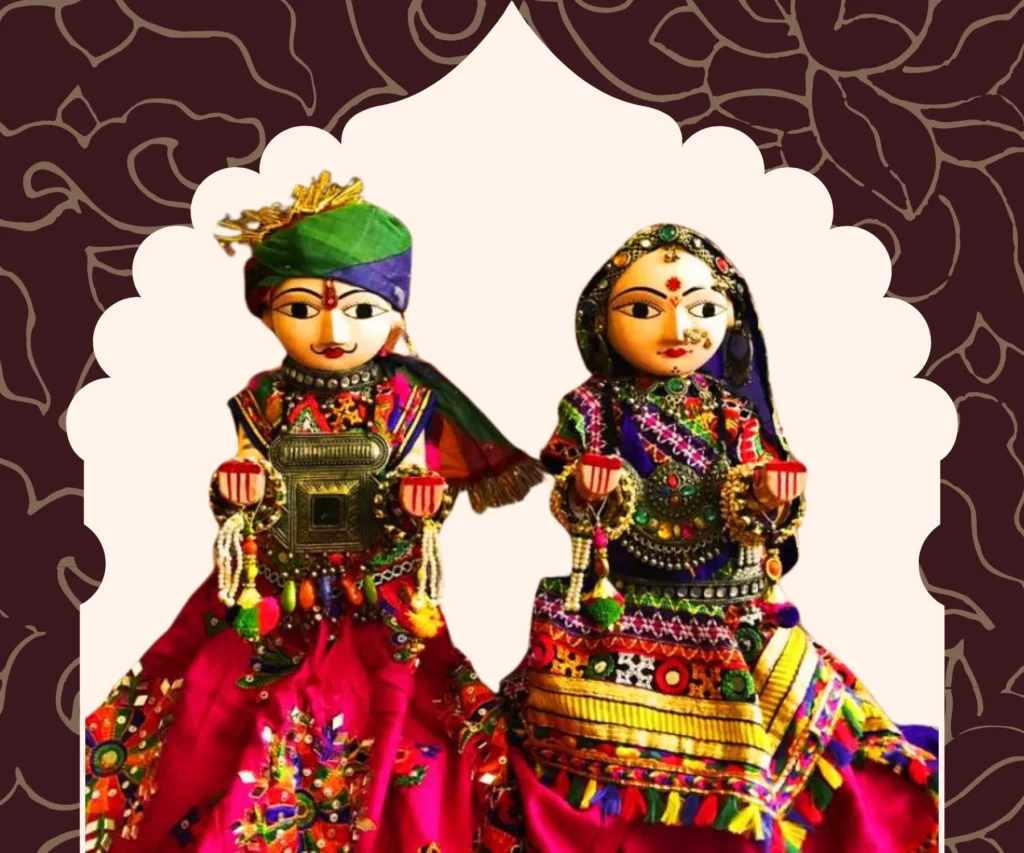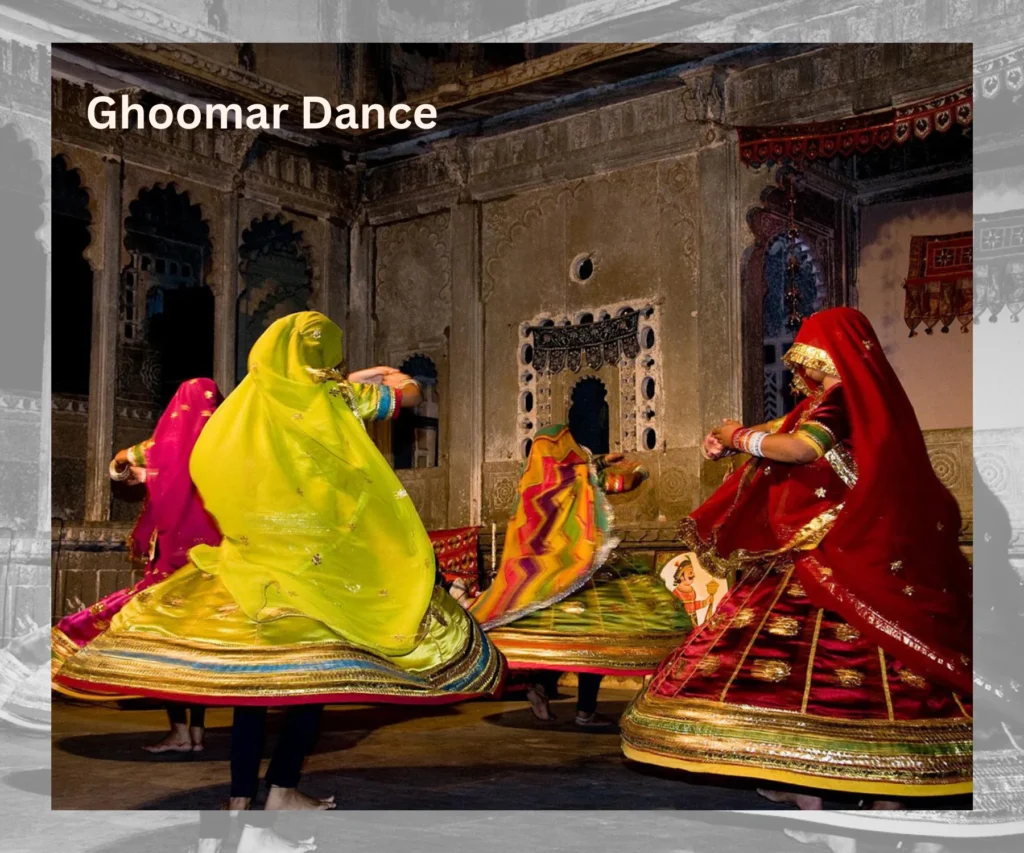Introduction: The Essence of Gangaur Festival
The Gangaur Festival is a dazzling spectacle that transforms Rajasthan’s arid landscapes into a riot of colors, sounds, and emotions. Held annually in March or April, this 16-day celebration honors Goddess Gauri (Parvati) and her divine union with Lord Shiva, symbolizing marital devotion, feminine strength, and the arrival of spring. Rooted in Hindu mythology, the festival is a vibrant blend of spirituality, tradition, and community bonding.
For married women, it’s an occasion to fast and pray for their husbands’ longevity; for unmarried women, it’s a time to seek blessings for a virtuous life partner. Beyond its religious significance, Gangaur serves as a cultural cornerstone, showcasing Rajasthan’s culture, folk arts, music, and craftsmanship. From the intricate clay idols of Gauri to the hypnotic rhythms of the Ghoomar dance, every ritual and performance tells a story of love, resilience, and renewal. This article unravels the festival’s layers, offering historical insights, cultural context, and practical tips for travelers eager to witness its magic firsthand.
The Origins and Significance of Gangaur Festival
The Gangaur Festival’s origins are deeply entwined with Hindu mythology, particularly the legends of Goddess Parvati’s unwavering devotion to Lord Shiva. According to ancient texts, Parvati performed intense penance to win Shiva’s affection, enduring hardships to prove her dedication. Their union symbolizes the harmony of masculine and feminine energies, a theme central to Gangaur. The name “Gangaur” merges Gana (Shiva’s celestial attendants) and Gaur (a name for Parvati), reflecting their inseparable bond.
Historically, Gangaur also coincides with the spring harvest, marking a time when agrarian communities in Rajasthan express gratitude for nature’s bounty. The festival’s timing aligns with the lunar calendar, beginning on the first day of Chaitra (March–April) and culminating on the third day of Shukla Paksha (the waxing moon phase). For centuries, it has served as a social and spiritual anchor, reinforcing values like marital fidelity, family unity, and environmental stewardship.

“Gangaur isn’t just about rituals; it’s a celebration of womanhood. The festival underscores women’s roles as nurturers and custodians of cultural traditions. Through fasting, singing, and communal gatherings, they strengthen familial and social bonds.”
– Dr. Anjali SHARMA (Cultural Historian)
Rituals and Traditions: A Day-by-Day Guide
The Gangaur Festival unfolds through a series of meticulously observed rituals, each imbued with symbolic meaning. Preparations begin weeks in advance, with women crafting clay idols of Gauri and Shiva. These idols, adorned with handmade jewelry and natural dyes, are placed in bamboo baskets alongside sprouted wheat or barley grains (gana), representing fertility and prosperity.
Key Phases of the Festival:
- Days 1–7: Married women observe a partial fast, abstaining from certain foods while praying for their husbands’ well-being. They gather daily to sing Gangaur Geet, folk songs narrating Parvati’s devotion and Shiva’s eventual acceptance of her love.
- Days 8–15: The fasting intensifies, with women refraining from eating until moonrise. Elaborate pujas (prayers) are conducted using offerings like incense, flowers, sweets, and henna. Mothers-in-law send sindhara—gift baskets filled with clothes, sweets, and bangles—to their daughters-in-law, symbolizing blessings and familial harmony.
- Day 16 (Final Day): The festival peaks with a grand procession. Idols of Gauri and Shiva are carried through streets on palanquins, accompanied by camels, elephants, and folk performers. In Jaipur, the procession starts at the City Palace and winds through the Old City, culminating in the immersion of idols in a water body.
A unique tradition during Gangaur is the Ghudlia ritual, where young girls dressed as celestial maidens sing door-to-door for alms. This act reenacts Parvati’s return to her parental home, blending mythology with community participation.
Cultural Extravaganza: Music, Dance, and Attire
Gangaur is a sensory feast, showcasing Rajasthan’s artistic heritage. Women don vibrant ghagras (flared skirts) paired with intricately embroidered odhnis (scarves) and silver jewelry, while men wear safas (turbans) and angrakhas (traditional coats) in bold hues. The festival’s visual splendor is matched by its lively performances:

- Ghoomar Dance: Performed in concentric circles by women, this dance is characterized by graceful spins and rhythmic claps. Its lyrics often praise Gauri and celebrate sisterhood.
- Kalbeliya Music: Derived from the Kalbeliya tribe (formerly snake charmers), this folk genre features the pungi (woodwind instrument) and dholak (drum), creating hypnotic melodies that echo through festival grounds.
- Puppet Shows: Traditional kathputli (string puppet) performances depict mythological tales, entertaining both locals and tourists.
Tourism Impact
According to the Rajasthan Tourism Board, cities like Jaipur, Udaipur, and Jodhpur see a 40% surge in visitors during Gangaur. The Jaipur procession, recognized by UNESCO for its cultural significance, draws crowds exceeding 50,000 annually.
Gangaur in Modern Times: Relevance and Evolution
While Gangaur remains rooted in tradition, it has adapted to contemporary realities. Urbanization and globalization have led to innovative practices:
- Eco-Friendly Celebrations: To combat environmental concerns, cities like Udaipur promote clay idol immersion in artificial ponds, reducing pollution in natural water bodies.
- Digital Engagement: Non-resident Indians (NRIs) participate via live-streamed rituals, while social media campaigns like #MyGangaurStory encourage younger generations to share their experiences.
- Women-Centric Initiatives: NGOs leverage the festival’s platform to advocate for women’s education and health. Workshops on financial literacy and legal rights are organized alongside traditional rituals.
Economic Contributions
A 2023 report by The Economic Times highlighted that Gangaur-related tourism generates over ₹200 crore annually for Rajasthan. Artisans specializing in idol-making, textiles, and jewelry also benefit, with sales spiking by 60% during the festival.
How to Experience Gangaur Festival: A Traveler’s Guide
For travelers, Gangaur offers an unparalleled cultural immersion. Here are some tips to maximize it:
Top Destinations:
- Jaipur: The royal procession at Talkatora Stadium features elaborately decorated elephants and performances by award-winning folk artists.
- Udaipur: The Lake Pichola boat procession, with illuminated idols against a backdrop of floating diyas (lamps), is a photographer’s dream.
- Jodhpur: The Mehrangarh Fort hosts evening performances of Maand music, a soulful Rajasthani genre.
Essential Tips:
- Respect Local Customs: Seek permission before photographing rituals or devotees. Dress modestly, avoiding sleeveless outfits or shorts.
- Savor Local Flavors: Indulge in festive treats like ghewar (honeycomb-shaped sweet) and dal baati churma (lentils with baked wheat balls).
- Plan Ahead: Book accommodations 3–4 months in advance, especially in heritage hotels like Jaipur’s Rambagh Palace.
“Attend the evening aarti (prayer ceremony) at Jaipur’s Galtaji Temple. The chants and oil lamps create an ethereal atmosphere”.
– Rajesh Kumar (a veteran Rajasthan tour guide)
Conclusion: A Timeless Celebration of Love and Culture
The Gangaur Festival is more than a religious event—it’s a living testament to Rajasthan’s resilience and creativity. By honoring Goddess Gauri, communities reaffirm their commitment to love, unity, and ecological balance. For travelers, it’s a gateway to India’s soul, where ancient traditions coexist with modern aspirations. As Rajasthan strides into the future, Gangaur remains a vibrant thread in its cultural tapestry, inviting the world to witness its beauty.


